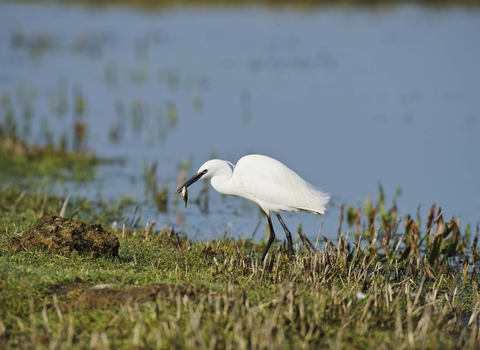
©Terry Whittaker/2020VISION
Little egret
The elegant little egret was once a rare visitor to our shores, but can now regularly be spotted around the coastline of England and Wales. Look out for its beautiful neck plumes that herald the breeding season.
Scientific name
Egretta garzettaWhen to see
January to DecemberSpecies information
Category
Statistics
Length: 60cmWingspan: 92cm
Weight: 450g
Average lifespan: 5 years
Classified in the UK as Green under the Birds of Conservation Concern 5: the Red List for Birds (2021).
Habitats
About
The little egret is a small, white heron that feeds on small fish and crustaceans. Once a very rare visitor from the Mediterranean, little egrets are now a common sight around the coasts of southern England and Wales as they expand their range, possibly due to increasing temperatures caused by climate change. It first bred in the UK on Brownsea Island, Dorset, in 1996, and has been moving northwards ever since; it was recorded as breeding in Berkshire for the first time in 2007.How to identify
The little egret is a white heron with black legs and yellow feet. It has a black bill and long plumes on its head and neck during the breeding season.Distribution
Found around the coasts and estuaries of England and Wales, more rarely in Scotland and inland.Did you know?
The long neck plumes of little egrets were once more valuable than gold and were smuggled into Europe during the 19th century. As a result, little egret populations plummeted until laws were put in place to protect them.Watch
Little Egret (https://vimeo.com/447454047)
Little Egret by Tom Hibbert
